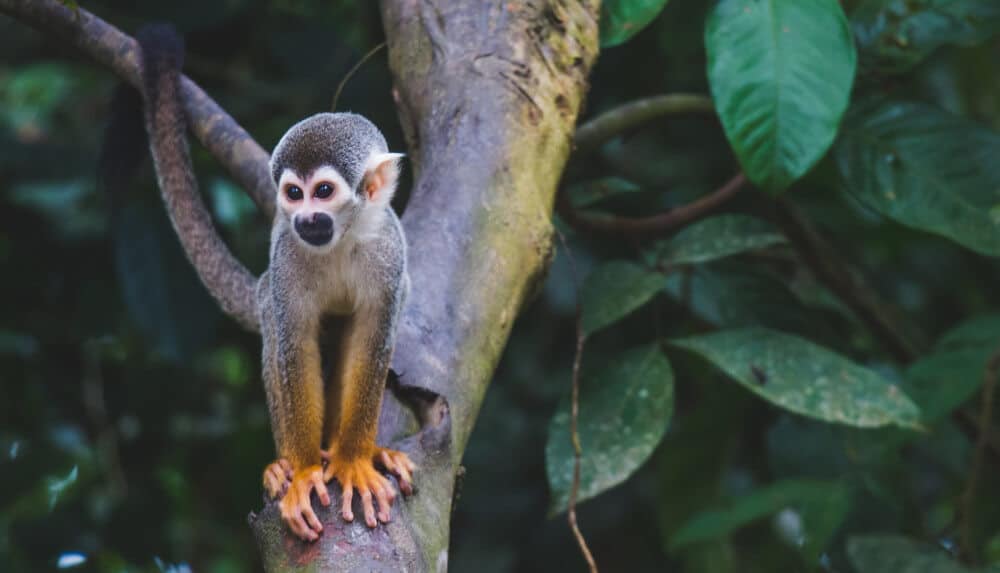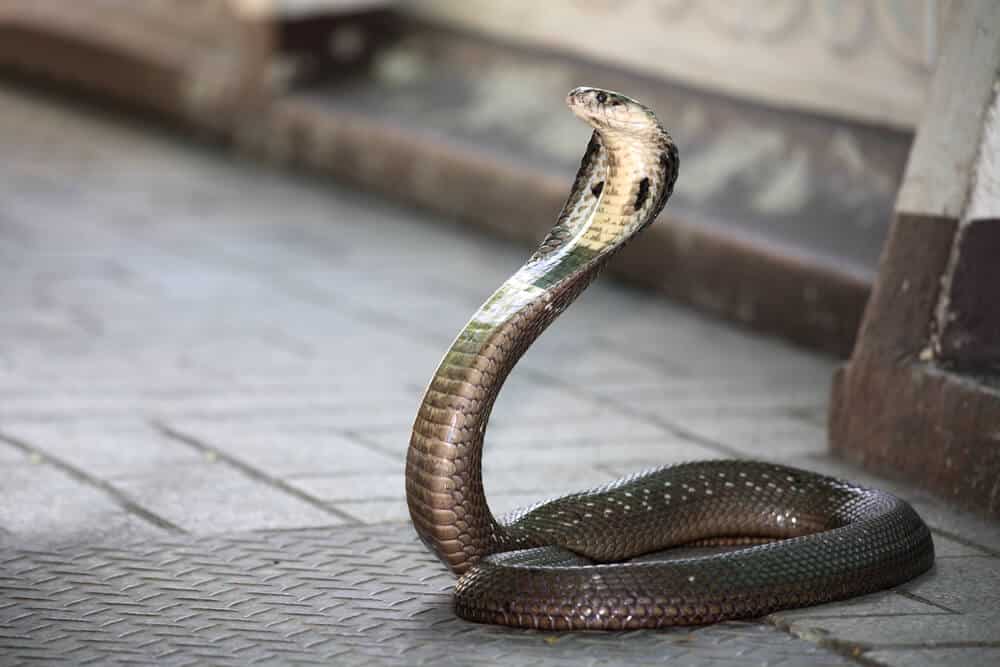Amazing Animals of the Amazon Rainforest
The Amazon Rainforest is the largest rainforest found on Earth. Home to millions of species, some of which are yet to be described by science, The Amazon Rainforest is a biological reservoir of life.
In this article, we aim to explore some of the most amazing animals of the Amazon Rainforest; from interesting birds to outright scary fish!

History of The Amazon Rainforest
Approximately 15 million years ago, around the formation of the Andes, The Amazon River formed an inland sea.
Over time, this sea became a large, freshwater swamp, and the marine residents adapted to the freshwater.
Today, over 20 species of stingray can be found within the Amazon River – species that are related to Pacific Ocean species.
Around 10 million years ago, waters eroded the sandstone bedrock. This allowed the Amazon River to begin to flow Eastward, towards the Atlantic.
This coincided with the Ice Age, where sea levels dropped and the Amazon Lake became the Amazon River (mongaby.com).
A few million years ago, a further reduction of sea level revealed the Isthmus of Panama; the land strip that connects South and North America.
This allowed for the mass migration of species. Soon after, biodiversity exploded.

Facts about the Amazon Rainforest
The tropical rainforest isn’t the only habitat type found in The Amazon.
Due to the ever-changing topography and climatic conditions, as well as the influences of mankind, the Amazon comprises of several different ecosystems.
These include seasonal forests, savannahs, flooded forests, swamps, bamboo forests, and swamps (wwf.com).
The Amazon Rainforest is big. Covering an area greater than 6,000,000 sq. km., the Amazon Basin occupies a whopping 40% of the entire continent of South America.
Whilst the majority of The Amazon can be found in Brazil, this large rainforest encompasses 8 other South American countries: Bolivia, Peru, Ecuador, Colombia, Venezuela, Guyana, Suriname, and French Guiana (britannica.com).
The Amazon Rainforest sits within the Amazon Basin. This basin is drained by the Amazon River; the second-longest river in the world, but the largest river in terms of water volume.
The Amazon River is the lifeline of the forest and plays an important role in the survival of many species, as well as the mighty forest itself.

There is a lot of water in The Amazon Basin. Every second, over 209,000 cubic meters of water flow per second into the Atlantic.
This is equivalent to filling over 7 million Olympic-sized swimming pools per day. But not only this, the forest itself releases a staggering 20 billion tons of moisture into the atmosphere.
Clouds swell and burst. Consequently, up to 3000ml of rain falls in The Amazon Rainforest per year (amazonaid.org).
Over 10,000 species are at risk of extinction. A recent, landmark study suggests that due to devastating human impacts on the Amazon, a huge diversity of plants and animals may be lost forever.
Deforestation and climate change are leading causes (theamazonwewant.org).
What Animals are found in The Amazon Rainforest?
Giant River Otter

Growing up to 1.8 meters, the giant river otter is the largest otter species in the world.
Giant river otters are very social mammals, forming groups of up to 20 individuals, that can be found throughout the rivers and creeks of The Amazon.
They are an efficient predator of the waterways, specializing in a fish diet.
However, fish is not the only item on the menu for these otters. Caiman, snakes, and crustaceans also form part of the giant river otter’s diet.
They are at high risk of extinction, due to excessive hunting by humans. They are a very elusive species, seldom spotted (nationalgeographic.com).
Tapir

The South American tapir is the largest terrestrial mammal of The Amazon.
They have evolved to adapt to the many different conditions of rainforest life – they can swim, climb steep gradients and reach leaves high in the canopy, thanks to their trunk-like nose.
Although adults are a drab, dark brown color, babies are ornately decorated with spots and stripes.
This isn’t just a fashion statement, as these spots and stripes actually allow the baby to blend into the environment and avoid detection from predators.
Tapirs are typically solitary herbivores, grazing on herbaceous vegetation, fruits, and aquatic vegetation.
Due to this vegetarian lifestyle, they are important for seed dispersal. This helps maintain the rainforest diversity (tapirs.org).
Squirrel Monkey

The squirrel monkey is a small, New World primate. No larger than a kilogram, squirrel monkeys are nimble and quick, often racing through the canopy branches, or on the forest floor to evade aerial predators.
Another strategy to evade predators is safety in numbers. Forming groups larger than any other New World monkey, it is not uncommon to spot troops of over 75 individuals.
In rare cases, and in areas of undisturbed rainforest, troops of 300 squirrel monkeys have been recorded.
Squirrel monkeys are omnivorous, feeding off a variety of fruits and small vertebrates.
Unlike other primates of The Amazon, squirrel monkeys do not have a prehensile tail. Alternatively, they use their long tail to balance (britannica.com).
Electric Eel

One of the most infamous of all Amazonian residents, the electric eel has generated a buzz. Quite literally. This freshwater fish can emit a huge electrical charge, which it uses to stun prey and confuse predators.
Battery-like cells, known as electrolytes, can be found within electric organs. These cells will discharge on demand.
However, attack and defense is not the only mechanism in which the electric eel uses its superpowers.
Due to the nature of their murky river habitat, eyesight is of little need to the eel. Instead, they produce a low-voltage charge, similar to that of sonar, to search for prey.
Electric eels sure are a peculiarity within the fish world. They have an elongated body, reaching lengths of up to 2.5 meters.
Unlike other fish of The Amazon, electric eels breathe air! That’s right, they swim to the surface and take a big gulp of air to obtain their oxygen (nationalgeographic.com).
Candiru

Sticking with the theme of peculiar fish, the Candiru should take the number one spot. This fish has gained quite a fearsome reputation, especially within the male community.
As legend has it, the candiru has the ability to swim up male genitalia and lodge itself within, using sharp appendages.
As shockingly terrifying as these stories seem, many believe the stories to be nothing more than myths and fables.
Whilst the fish does in fact have sharp spines, they are intended to be used on fish victims. The candiru is parasitic, feeding off the blood of other fish, and the spines help attach the candiru to fish gills.
The candiru itself is a small, eel-like fish. Despite its elongated appearance, the candiru is a member of the freshwater catfish family (britannica.com).
Hoatzin

Thought to be the missing link between birds and dinosaurs, the young of this primitive bird species have two large claws on the tip of their wings.
These functional claws are used to help the chicks climb into the trees, after falling or dropping into water to evade predators.
But the addition of wing claws isn’t the only odd trait to be found.
They are the only known bird species to break down vegetation using a fermentation process – very similar to how ruminants, such as cows, break down food.
They feed off aquatic swamp foliage, where the vegetation is ground in the crop (food is broken down in the gizzard of other birds).
That’s not all. Far from, in fact. A nickname the hoatzin has acquired for itself is the rather flattering “stink bird”.
Before you accuse the scientists of bullying, the hoatzin really does smell. Due to their vegetarian diet, specialized bacteria have coevolved to help break down the cellulose found within plant matter (discoverwildlife.com).
Bullet Ant

Thought to have one of the most painful stings in the entire world, bullet ants are certainly one insect you will want to avoid on any trip to the Amazon.
The pain is so bad, that it is often compared to being shot by a bullet; hence the name.
Colonies of bullet ants are found at the base of trees in lowland rainforests throughout the Amazon Basin.
Worker ants forage in the jungle canopy, searching for small invertebrates and nectar.
Unlike other ant species, where individuals within a colony number the tens of thousands, bullet ant colonies consist of just a few hundred induvial.
About an inch in size, their biggest threats come from neighboring bullet ant colonies (biogeoplanet.com).
Black Caiman

Reaching over 5 meters in length, black caimans are one of the largest predators of The Amazon.
Their large size makes them an apex predator of the Amazon River, where they prey on a diverse range of animals such as tapir, giant otters, monkeys, fish, and more.
As a general rule of thumb, any animal that strays too close to the black caiman is potential prey.
However, their fearsome reputation couldn’t save them from near extinction.
Hunted to fuel the fashion trade, it is thought nearly 99% of the population of black caimans were wiped out.
Thankfully, after years of conservation work, their numbers are once again stable in The Amazon Basin (amazonaid.org).
Do we need the Amazon Rainforest?
The Amazon Rainforest is an incredibly important and valuable asset to Planet Earth.
Not only is this vast rainforest home to countless species, as well as indigenous communities, but the Amazon also plays a vital role in the regulation of the world’s oxygen and climate cycles.
As much as 6% of the entire production of oxygen on Earth comes directly from The Amazon. This, in turn, has a profound effect on the climatic conditions and weather patterns of the world.

The sheer abundance of trees helps stabilize the world’s climate, by absorbing carbon dioxide – a chemical compound associated with the warming of our planet (nationalgeographicic.com).
By felling The Amazon Rainforest, often by slash and burn techniques, carbon is released back into the atmosphere at alarming rates, contributing to climate change and the extinction of many plants and animals
Many of these are socially, economically, and scientifically important for human survival.
We need to protect The Amazon Rainforest, and the amazing animals found within to mitigate the disastrous impacts of climate change.





